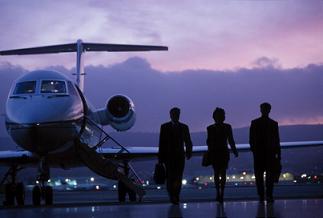
Business aircraft are taking to the skies again as many economies around the world improve, but a surplus of jets delivered just before the recession means the equivalent of 2,750 jets remain parked in hangars.
An excess of jets is depressing prices for planes, particularly older ones, and clouding the outlook for manufacturers of new jets, such as Bombardier Inc, Gulfstream and Cessna.
Some companies are cutting back on corporate jet travel and reducing executives' use of corporate jets for personal trips.
With so many jets not being flown, businesses are finding it more difficult to justify new purchases, said Rolland Vincent, president of Rolland Vincent Associates, a jet consulting firm that works with Utica, New York-based JetNet.
"It's like having a lot of cars in your driveway," Vincent said. "If you don't use them that much, you're not going to be out shopping for another one."
The recovery in business flying is uneven around the world, and prone to setbacks. A global survey of private aircraft, including helicopters and charters, showed a 2 percent decline in the hours flown in the first quarter, from a year ago.
Flight hours in Asia, Europe and the Middle East rose in the past year through March, but declined in the United States and Latin America, according to the survey by Jet Support Services Inc (JSSI), a Chicago-based company that supplies service and support for aircraft.
The harsh U.S. winter played a big role in depressing demand for flying, while political issues in Eastern Europe and slower economic growth in Asia affected flying in those regions, JSSI said.
But demand should "bounce back" in the spring, said Neil Book, chief executive of JSSI. "As the overall economy ramps up, we expect to see overall flight hours increase more quickly," he said.
Indeed, the longer term trend in operations tracked by the Federal Aviation Administration shows U.S. flying steadily picking up.
In the United States, which is by far the largest business-aircraft market, business jet flights rose about 3.4 percent in the 12 months through March, according to the FAA's tracking of takeoffs and landings. That's a sharp upswing from the prior 12-month period, when flights rose only about 0.3 percent.
But because the industry was cranking out jets at a high rate from 2005 to 2009, the amount of flight time per plane remains well below the peak of 2007, just before the financial crisis.
Back to other news













